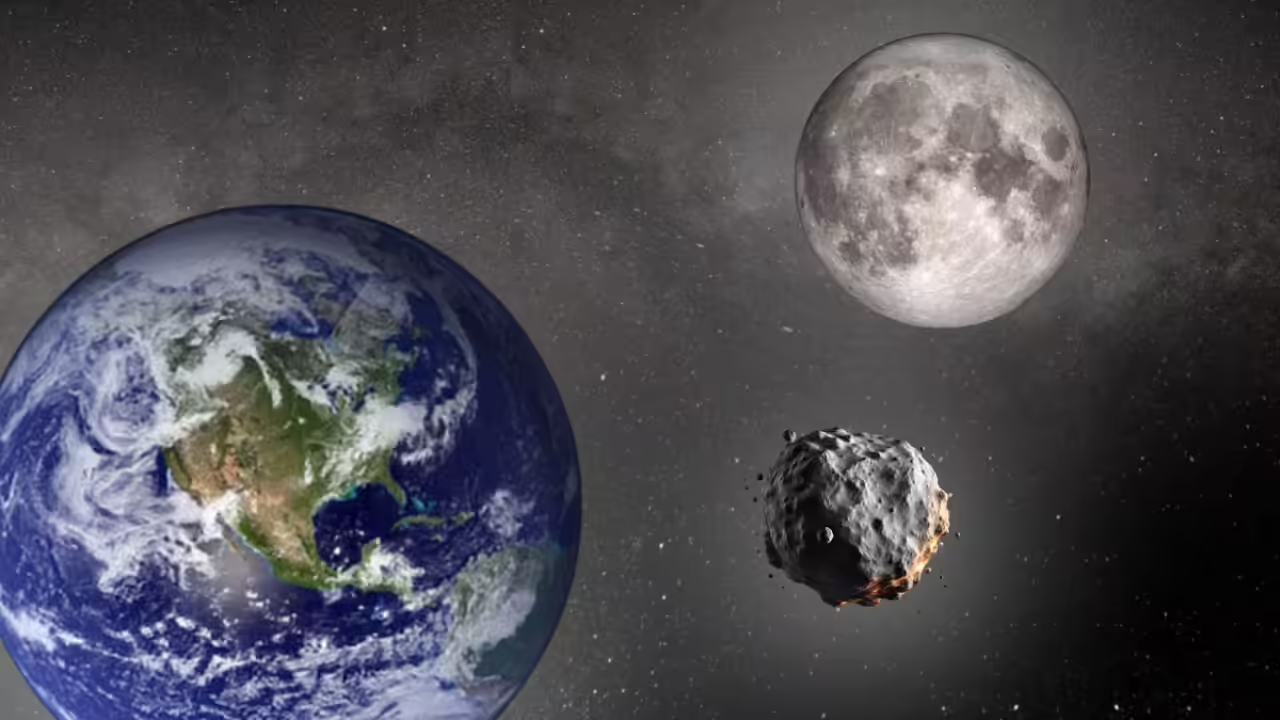Earth has a new temporary companion. Astronomers have confirmed that a small asteroid, 2025 PN7, has joined our planet’s orbit. Measuring roughly 62 feet in diameter, this quasi-moon is not permanently bound like the Moon but follows a looping path that keeps it near Earth for decades.
What Is 2025 PN7?
2025 PN7 is a small quasi-moon roughly the size of a large bus. With a magnitude of 26, it is extremely faint and difficult to spot with standard amateur telescopes. Despite its size, it is significant because it temporarily shares an orbit with Earth, appearing as though it is circling the planet.
Unlike the Moon, 2025 PN7 is not gravitationally bound to Earth in the traditional sense. It follows a looping trajectory that keeps it nearby for decades before eventually drifting away.
Mini-Moons vs. Quasi-Moons
Objects like 2025 PN7 are often referred to as mini-moons or quasi-satellites:
-
Mini-moons: Captured temporarily, usually remain near Earth for months or a few years.
-
Quasi-moons: Maintain a more stable, looping orbit that keeps them close to Earth for decades.
2025 PN7 is a quasi, sharing nearly the same orbital period as Earth but with slight deviations that cause it to drift closer and farther from our planet over time.
The Arjuna Asteroid Population
Astronomers classify 2025 PN7 within the Arjuna population, a group of near-Earth asteroids with Earth-like orbits. Their delicate movements are influenced by both the Sun and Earth, creating temporary gravitational balances that allow them to linger near our planet for long periods.
Studying these objects gives scientists insight into orbital dynamics, gravitational resonance, and asteroid behavior, which are crucial for understanding near-Earth threats and potential exploration missions.
Rediscovery and Decades-Long Orbit
Although initially discovered roughly 60 years ago, 2025 PN7 was re-observed on August 29, 2025, by the Pan-STARRS observatory in Hawaii. This confirmed that it had been quietly orbiting Earth for decades. Scientists estimate its quasi-satellite orbit will last until at least the 2080s, offering astronomers a rare chance to study long-term interactions between small bodies and our planet.
Earth’s Growing Family of Quasi-Satellites
2025 PN7 now joins a growing family of near-Earth quasi-satellites, including:
-
Kamo’oalewa (2016 HO3)
-
Cardea (2004 GU9)
-
2013 LX28
-
2014 OL339
-
2023 FW13
These objects help scientists model the dynamics of small bodies in the Earth-Moon system and understand the history of our Solar System.
Why 2025 PN7 Matters
The discovery of 2025 PN7 is more than a curiosity. Its stable orbit provides astronomers with valuable data on:
-
Orbital mechanics
-
Gravitational resonance
-
Near-Earth asteroid behavior
By studying quasi-moons like 2025 PN7, scientists gain insights into asteroid formation, secondary asteroid belts, and the history of our Solar System, while also preparing for potential asteroid exploration missions in the future.







Leave A Comment